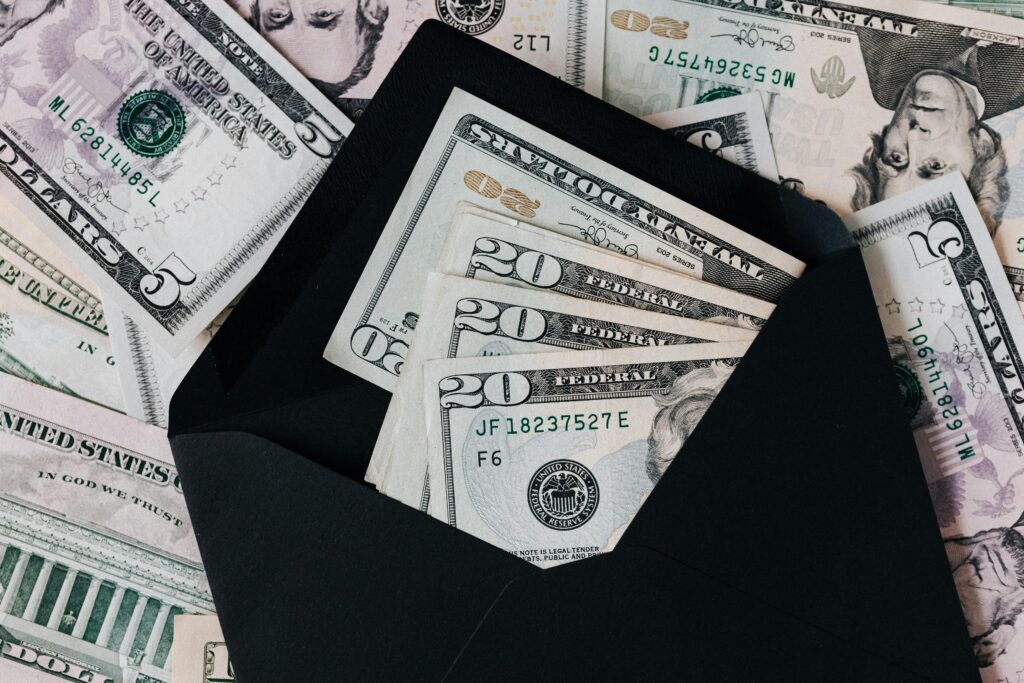Welcome!
If you’re reading this, chances are you’re dealing with debt and looking for ways to tackle it, even if your budget is tight. You’re not alone in this struggle, and it’s absolutely possible to regain control of your finances, no matter how limited your resources might seem.
Take a moment to settle in with your favorite drink—whether it’s a comforting coffee, a soothing tea, or something else that makes you feel at ease. This space is here for you to explore debt management without any judgment. We’re all navigating this together, and every experience is valid.
Let me share a bit of my own story. I’ve faced financial challenges and understand the hurdles you’re encountering. It wasn’t always easy, but each step forward, no matter how small, made a difference. Think of this article as your guide and companion on the journey to financial freedom. Together, we’ll explore practical strategies to manage and pay off your debt, even on a tight budget. Let’s dive in and start transforming your financial future.

#1. Know Your Debt: The First Step to Freedom
If you want to pay off your debt quickly, the first thing you need to do is know your debt inside and out. Understanding what you owe is the foundation of any successful repayment plan.
It may seem daunting at first, but facing your debt head-on is the first step toward financial freedom.
Let’s face it: ignoring your debt won’t make it disappear. The first step to gaining control is to gather your courage and face your financial situation head-on. You need a clear picture of your total debt, including interest rates and minimum payments, to create a strategy that works. This is crucial because knowing your debt allows you to prioritize your payments effectively.
It’s like looking at a map before you set off on a road trip. You wouldn’t hit the road without knowing where you’re going, right? The same goes for your debt. You need to know the lay of the land before you can chart your course to debt freedom.
How to Calculate Your Total Debt
Here’s a step-by-step guide to help you calculate your total debt:
- Get Your Credit Report: Start by obtaining a copy of your credit report. This will give you an overview of all your debts, including loans, credit cards, and any outstanding balances. Websites like AnnualCreditReport.com offer free credit reports from major bureaus.
- List All Debts: Grab a pen and paper, or fire up a spreadsheet, and list every single debt you owe. Include everything from student loans to that credit card you forgot you had.
- Note Key Details: For each debt, note the amount owed, interest rates, minimum payments, and due dates. This information will be your roadmap to tackling your debt efficiently.
- Prioritize: Highlight high-interest debts first. These are the ones that’ll cost you the most in the long run, so tackling them first can save you money on interest.
Once you have everything laid out, you’ll have a clearer picture of your financial landscape, and you can start planning your path to debt freedom.

#2. Negotiate with Creditors
Believe it or not, you can actually negotiate with your creditors. Many people don’t realize this, but a simple phone call can lead to reduced interest rates or more manageable payment plans. You just have to ask.
Here’s how to go about it:
- Be Honest: When you call your creditors, be upfront about your situation. Let them know you’re committed to paying off your debt but need some assistance in managing the payments.
- Ask for Lower Rates: Politely request a lower interest rate or inquire about any hardship programs they might offer. You’d be surprised how often they’ll accommodate your request just to ensure they continue to receive payments from you.
- Get Agreements in Writing: If you come to an agreement, make sure to get it in writing. This will protect you in case there are any discrepancies down the line.
Negotiating with creditors can make a significant difference in your repayment journey. Even a small reduction in your interest rate can save you hundreds or thousands over the life of your debt.

#3. Create a Budget That Works for You
Budgeting is like your financial GPS. It’s a powerful tool that helps you manage your money effectively and pay off debt faster. Without a budget, you’re essentially flying blind when it comes to your finances. But with a budget in place, you can track expenses, prioritize needs, and allocate funds wisely.
Imagine your budget as your best friend on this journey to financial freedom. It’s there to guide you, keep you on track, and help you reach your goals faster.
Here’s why budgeting is crucial, especially when you’re trying to pay off debt quickly:
- Tracking Expenses: A budget helps you see exactly where your money is going each month. It’s like having a magnifying glass on your spending habits, allowing you to identify areas where you can cut back.
- Prioritizing Needs: When you know your financial situation inside and out, you can prioritize essential expenses like housing, food, and healthcare. This ensures you’re covering your needs before anything else.
- Allocating Funds Wisely: With a budget, you can allocate funds toward your debt strategically. You can put extra money toward high-interest debts, making a significant dent in your balances over time.
Different Budgeting Methods to Explore
There’s no one-size-fits-all approach to budgeting. Different methods work for different people. Here are a few popular budgeting techniques you can explore:
- 50/30/20 Rule: This method divides your income into three categories: 50% for needs, 30% for wants, and 20% for savings and debt repayment. It’s a simple yet effective way to ensure you’re allocating your funds wisely.
- Envelope System: With this approach, you allocate a specific amount of cash for each spending category (like groceries or entertainment) and place it in an envelope. Once the envelope is empty, you can’t spend any more in that category.
- Zero-Based Budgeting: This method involves giving every dollar a purpose, so your income minus your expenses equals zero. It forces you to account for every penny, ensuring you’re maximizing your financial resources.

Choose a method that aligns with your personality and financial habits. The key is to find a system that works for you and stick with it.
Focus on Essentials First
When you’re budgeting on a tight income, focusing on essentials is critical. Here’s how to prioritize your spending:
- List Essentials: Start by listing your essential expenses, such as housing, utilities, food, healthcare, and transportation. These are the non-negotiables that need to be covered before anything else.
- Allocate Funds: Make sure your budget covers these essentials first. Then, you can allocate any remaining funds toward debt repayment and discretionary spending.
- Cut Unnecessary Expenses: Look for areas where you can cut back. Maybe it’s those daily lattes or unused subscriptions. Redirecting these funds toward your debt can accelerate your progress.
Remember, the goal is to make your budget work for you, not the other way around. By focusing on essentials first, you can ensure you’re covering your needs while still making strides toward debt freedom.
Cut Costs Without Sacrificing Happiness
We all want to save money, but the thought of cutting expenses often brings up images of living off ramen noodles and never having fun again. It doesn’t have to be that way. You can reduce your spending without feeling deprived, freeing up more money for debt repayment while still enjoying a comfortable lifestyle. It’s all about smart spending and saving strategies.
Find Hidden Savings in Your Budget
Let’s start by finding those hidden savings lurking in your budget. You’d be surprised how much you can save by cutting non-essential expenses. Look at your spending habits and pinpoint areas where you can cut back.
Thinking about dining out?—is it really necessary to eat at a restaurant every week? Cooking at home can save you a lot of money and might even become a fun new hobby.
Next, consider your phone plan. Are you paying for data you never use? Switching to a cheaper plan or provider could put more dollars in your pocket every month. It’s all about being resourceful and finding areas where you can save without sacrificing too much comfort.
Say Goodbye to Unnecessary Subscriptions
Subscriptions can be sneaky. They add up without you even noticing. It’s time to review and cancel those unused subscriptions or services that are silently draining your bank account.
Take a look at that gym membership you haven’t used in months, or those streaming services you barely watch. These may seem like small expenses, but cutting them can have a significant impact over time.
Pro Tip: Use apps like Truebill or Mint to help identify recurring charges you might have forgotten about. By trimming these costs, you can redirect those savings straight to your debt repayment plan.
Don’t Forget the Fun – But Plan for It
A budget that leaves no room for fun is a budget doomed to fail. Life shouldn’t be all about debt payments and sacrifices. You deserve to enjoy life, too—just make sure it fits into your budget.
Plan for leisure activities by setting aside a small portion of your budget for things you enjoy. It could be a monthly movie night, a nice dinner out, or a weekend getaway. The key is to plan for these expenses so they don’t derail your progress.
Leave a little buffer for unexpected expenses or indulgences. This makes your budget realistic and sustainable. Remember, the goal is to cut costs, not happiness.

The Importance of an Emergency Fund
Imagine this: you’re making great progress on paying off your debt, and then—bam!—an unexpected expense hits. Maybe your car breaks down, or you need emergency medical care. Without a financial cushion, these surprises can derail your debt repayment efforts. That’s why having an emergency fund is essential, even on a tight budget.
An emergency fund acts as a safety net, protecting you from unexpected financial setbacks that could throw you off track. Think of it as a shield that guards your progress toward debt freedom.
Even if you’re living on a tight budget, an emergency fund can give you peace of mind. You’ll know you’re prepared for whatever life throws your way. Trust me, this little cushion can make all the difference.
Personal Story: Take it from someone who learned the hard way—when my car broke down, my emergency fund saved me from needing to rely on credit. It kept me on track with my debt repayment plan.
Small Steps to Build Your Emergency Fund
Building an emergency fund doesn’t require a financial miracle. Start small and stay consistent.
- Set Aside Small Amounts Regularly: Every little bit counts. Start by setting aside a small amount each paycheck. Even $10 or $20 can add up over time. Make it automatic if you can.
- Save Loose Change: That jar of coins on your dresser? It can be a great starting point. Collect loose change and deposit it regularly. You’d be surprised how quickly it grows.
- Initial Goal: $1,000: Aim for an initial goal of $1,000. It’s a solid starting point that can cover most unexpected expenses. Once you hit this target, you can gradually build a larger fund.
The key is to make saving a habit, no matter how tight your budget is. This fund will be your lifeline when unexpected costs arise, keeping you on the path to financial freedom.

Avoid New Debt Like the Plague
Paying off existing debt is challenging enough; you don’t want to add new debt to the mix. Avoiding new debt while focusing on repayment is crucial to your financial success. Here’s how to resist temptations and make mindful spending decisions.
Put a Stop to New Debt Accumulation
Taking on more debt is like digging a deeper hole when you’re trying to climb out. It’s counterproductive and can hinder your progress toward financial freedom.
- Resist New Credit Lines: Opening new credit lines or making unnecessary purchases on credit can extend your repayment timeline and increase your financial burden. Stick to what you need and avoid impulse buying.
- Mindful Spending: Before making any purchase, ask yourself if it’s a need or a want. If it’s not essential, skip it or find a more budget-friendly alternative.
The Pitfalls of Payday Loans and High-Interest Options
High-interest lending options, like payday loans, might seem like a quick fix, but they can trap you in a cycle of debt that’s hard to break. These options often come with exorbitant interest rates that can worsen your financial situation.
Steer clear of payday loans and explore alternative solutions if you need financial assistance. Consider seeking help from local non-profits, community organizations, or family and friends if necessary. By avoiding new debt and steering clear of high-interest traps, you’ll keep your financial progress on track and accelerate your journey to a debt-free life.
When you’re ready to tackle debt, having a solid repayment plan is crucial. A well-crafted plan can accelerate your progress and keep you motivated on your journey to financial freedom. Let’s explore some effective debt repayment strategies that can make a real difference.
Two Proven Methods to Crush Debt
You have options when it comes to paying off debt, and choosing the right strategy is key. Two popular methods are the Debt Snowball Method and the Debt Avalanche Method. Each has its pros and cons, and it’s all about finding the approach that aligns with your goals and personality.
- Debt Snowball Method: This method focuses on paying off the smallest debts first. Here’s how it works: list all your debts from smallest to largest. Pay the minimum on all except the smallest, which you attack with everything you’ve got. Once it’s paid off, move to the next smallest.
- Benefits: You get quick wins that boost your motivation. Knocking out small debts feels great and can encourage you to keep going.
- Drawbacks: You might pay more in interest over time, as you aren’t focusing on high-interest debts right away.
- Debt Avalanche Method: With this method, you target debts with the highest interest rates first. List all your debts by interest rate and focus on paying off the one with the highest rate, while paying the minimum on others.
- Benefits: You save money in the long run by reducing the amount paid in interest. It’s mathematically efficient.
- Drawbacks: It might take longer to see tangible progress, which can be less motivating initially.
The best method is the one you can stick with, so choose the approach that keeps you fired up and moving forward. Remember, the goal is to eliminate debt efficiently while staying motivated.
Track Your Progress with a Debt Repayment Spreadsheet
Tracking your progress is vital to staying on track with your debt repayment plan. It’s like having a map on a road trip—it shows where you’ve been and where you’re headed.
Consider using a debt repayment spreadsheet or app to monitor your progress. Tools like Google Sheets, Excel, or budgeting apps can help you keep tabs on payments, interest rates, and balances.
To make things easier, here’s a free debt snowball spreadsheet you can download and use. It’s a simple tool to help you stay organized and motivated as you watch your debts shrink.
By visualizing your progress, you’ll be able to celebrate small victories along the way and keep your eyes on the prize. Remember, every payment brings you one step closer to freedom.
Boost Your Income: Side Hustles and More
Sometimes, cutting expenses alone isn’t enough to make a significant dent in your debt. That’s where boosting your income comes in. Earning extra money can accelerate your debt repayment journey and reduce financial stress. Let’s explore some creative ways to increase your income.
When you’re on a tight budget, increasing your income can be a game-changer. Supplementing your earnings through side hustles or part-time jobs can expedite debt repayment and provide a safety net for unexpected expenses.
I once met someone who managed to pay off $10,000 in credit card debt within a year by working weekend gigs and freelancing online. Their determination and extra income turned their debt repayment plan into a reality.
Supplemental income doesn’t just fill financial gaps—it empowers you to take control of your financial situation and move towards debt freedom faster.
Creative Side Hustle Ideas to Consider
Finding a side hustle that aligns with your skills and interests can make earning extra money enjoyable. Here are a few ideas to get your creative juices flowing:
- Freelancing: Use your skills in writing, graphic design, programming, or any other field to offer freelance services on platforms like Upwork or Fiverr.
- Selling Handmade Goods Online: If you’re crafty, consider selling handmade items on Etsy or at local markets. Whether it’s jewelry, crafts, or clothing, there’s a market for handmade products.
- Participating in Gig Economy Jobs: Explore opportunities with Uber, Lyft, DoorDash, or Instacart. These gig economy jobs offer flexible hours that can fit around your schedule.
- Pet Sitting or Dog Walking: If you love animals, consider pet sitting or dog walking through platforms like Rover.
- Tutoring or Teaching Online: Share your expertise by tutoring or teaching online. Websites like VIPKid allow you to teach English or other subjects remotely.
The key is to find something you enjoy that fits your schedule and skill set. Experiment with different options and see what works best for you.

Monetize Your Hobbies for Extra Cash
What if you could turn your passion into a profitable venture? Many people have done just that, and you can too. Monetizing your hobbies can be a fun way to earn extra cash without feeling like you’re working.
Think about what you love to do. Do you have a hobby or passion that could be turned into an income stream? Here are a few success stories:
- Photography: If you have a knack for taking stunning photos, consider selling your images on stock photography sites like Shutterstock or Adobe Stock. You can also offer portrait sessions or event photography services.
- Writing: If you enjoy writing, explore opportunities in freelance writing, blogging, or self-publishing eBooks. Websites like Medium or Amazon Kindle Direct Publishing can be platforms to showcase your writing skills and earn money.
- Crafting: If crafting is your passion, you can sell your creations online or at local craft fairs. Whether it’s knitting, woodworking, or making candles, there’s a market for unique, handmade items.
The key is to align your side hustle with what you’re already passionate about. This way, it won’t feel like a chore and can add a fulfilling dimension to your journey toward debt freedom.
These sections should provide practical advice and motivational insights to help readers tackle their debt and find additional income streams.

Celebrate Your Progress: Small Wins Matter
On your journey to paying off debt, it’s crucial to acknowledge and celebrate your progress. Even the smallest victories are worth recognizing because they fuel your motivation and reinforce your commitment.
Why Celebrating Milestones is Essential
Celebrating milestones, no matter how small, offers more than just a moment of joy. It boosts your motivation and keeps you engaged with your goals. Recognizing progress, like paying off a credit card or hitting a savings target, helps solidify positive habits and makes the overall journey more rewarding.
When you take a moment to celebrate, you’re not just marking an achievement—you’re also reinforcing the behavior that led to that success. This creates a positive feedback loop that encourages you to keep pushing forward.

Creative Ways to Reward Yourself Without Overspending
You don’t need to splurge to celebrate your milestones. Here are some budget-friendly ideas that align with your financial goals:
- Treat Yourself to a Special Meal: Cook a nice dinner at home or enjoy a meal out at a favorite, affordable restaurant. It’s a simple way to celebrate without breaking the bank.
- Enjoy a Day Out: Plan a day of free or low-cost activities, like hiking, visiting a museum, or exploring local parks. It’s about creating memorable experiences rather than spending a lot of money.
- Indulge in a Favorite Hobby: Spend some time doing something you love—whether it’s crafting, reading, or watching a movie. The key is to reward yourself with experiences that bring you joy.
- Host a Small Celebration: Invite close friends or family over for a casual gathering to share your success. It’s a great way to mark the occasion without spending too much.
Remember, celebrating your achievements helps maintain your momentum. It keeps you excited about the journey and reinforces the progress you’re making.
Conclusion
As you continue on your path to paying off debt, remember that this journey requires persistence and patience. The road to financial freedom is paved with determination, and every step forward brings you closer to your goals.
Stay committed to your debt repayment plans. Financial stability is within your grasp if you stay focused and motivated. Each payment you make and each milestone you achieve is a testament to your dedication.
And also flexibility is key. If something isn’t working as planned, don’t be afraid to adjust your strategies. It’s normal to encounter setbacks, but with perseverance and adaptability, you can overcome them and stay on track.
Don’t forget to celebrate your progress along the way. Each small victory is a reason to feel proud and motivated. Embrace the journey with a positive outlook, and remember that each step brings you closer to a debt-free future.
Your path to financial freedom is not just a destination but an empowering journey. Keep pushing forward, celebrate your successes, and know that you’re making significant strides toward a brighter financial future.

